Pros
-
Plenty of pro-grade features
-
18.1-megapixel sensor
Cons
-
Weighs more than 7 lbs
Introduction
Video Review
{{section_header}}{{section.name}}{{/section_header}}
Front
{{section_header}}{{section.name}}{{/section_header}}
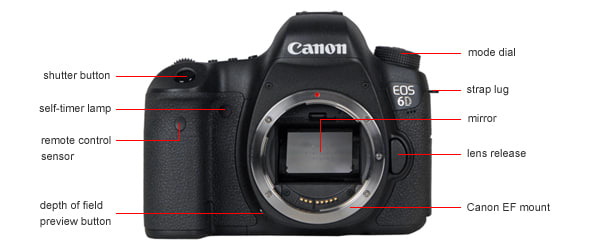
Back
{{section_header}}{{section.name}}{{/section_header}}
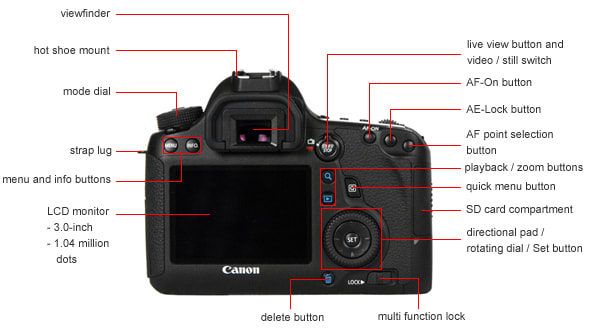
Sides
{{section_header}}{{section.name}}{{/section_header}}
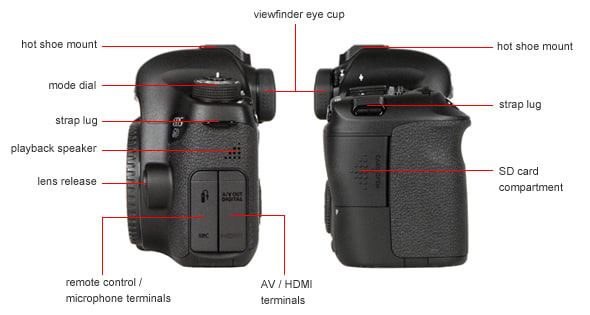
Top
{{section_header}}{{section.name}}{{/section_header}}
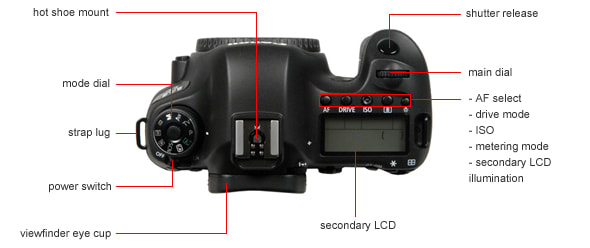
Bottom
{{section_header}}{{section.name}}{{/section_header}}

In the Box
{{section_header}}{{section.name}}{{/section_header}}
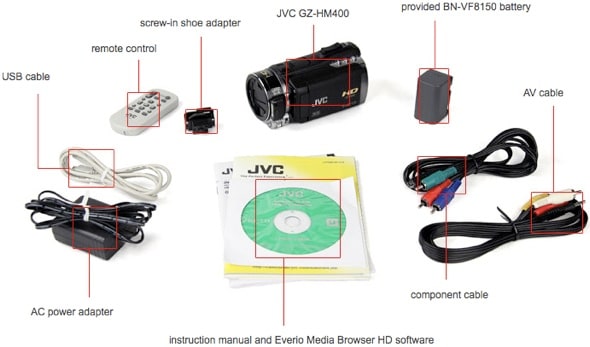
In the box with the Canon 1D X you can expect to find the following accessories:
EOS-1D X Digital SLR Body
• eyecup Eg (not shown)
• battery pack LP-E4N
• battery charger LC-E4N
• wide neck strap L7
• cable protector
• stereo AV cable AVC-DC400ST
• USB interface cable IFC-200U
• EOS digital solution Disc
• software instruction manual
Kit Lens & Mount
{{section_header}}{{section.name}}{{/section_header}}
We tested the Canon 1D X with the 24-70mm f/2.8L USM lens. This is the "original" version of the lens, as version II is just shipping as of this publication. The "original" version that we've used is notorious for having a wild copy-to-copy variation, but we've double-checked our numbers with the folks over at LensRentals.com, who have tested over 120 copies of the lens. All the sharpness numbers for our copy meet their acceptable standard, so our numbers are representative of the quality you could expect with a Canon 1D X and an off-the-shelf version of the original 24-70mm f/2.8L.
The new version of this lens is supposed to be dramatically sharper, however, than the lens we tested. This will impact our results and our samples, many of which look soft out of the camera (with no sharpening applied). We encourage anyone considering the 1D X to pair with either version of the 24-70mm f/2.8L lens to read Roger Cicala, founder of LensRentals.com, and his take on the differences between the two lenses.
The new version of the lens simply wasn't available as of testing. If you are pairing the Canon 1D X with a sharper prime or the newer 24-70mm f/2.8L II lens, you will likely get better results than we did with the original version of the lens, of course. This 24-70mm f/2.8 lens does, however, match up better with the Nikkor 24-70mm f/2.8 lens that we used to test the Nikon D4, the 1D X's chief competition.
The Canon 1D X uses the standard Canon EF mount. It is compatible with EF lenses only, as the more compact EF-S lenses will not work with the body. The lens mount is all metal, as you'd expect, with a standard lens release on the front of the body.
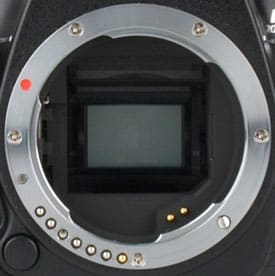
Classic Pentax lenses can be mounted with readily available adapters.
Sensor
{{section_header}}{{section.name}}{{/section_header}}
The image sensor on the 1D X is a full-frame (36mm x 24mm) CMOS image sensor with a total resolution of 18.1 megapixels. For those who perhaps aren't familiar, the full-frame image sensor is about 2.5 times larger than a normal APS-C image sensor. Full-frame image sensors are designed to replicate the image area of 35mm film, which will allow you to use 35mm film lenses and achieve the same angle of view as you would on film.
Convergence areas of different sensor sizes compared
Viewfinder
{{section_header}}{{section.name}}{{/section_header}}
The viewfinder on the 1D X is large and bright, with 100% coverage of the frame. It has a magnification of approximately 0.76x, with a 20mm eyepoint. The viewfinder is adjustable, with a removable eyecup that comes with the camera. The finder makes acquiring and confirming focus very easy, with plenty of information presented around the frame. If you're doing long exposures with the camera, there's also a lever to cover the viewfinder so that there's no extra light leaking onto the sensor.
Display(s)
{{section_header}}{{section.name}}{{/section_header}}
The rear LCD has a resolution of 1.04 million dots (sub-pixels), and a diagonal measurement of 3.2 inches. That puts it among the top of the class for a standard DSLR. The monitor is fixed into the camera, so for videography you'll have to use an external monitor or deal with having to look silly to get certain shots.
Secondary Display
The secondary displays on the Canon 1D X show a bevy of useful information. Most of your shooting information—exposure values, compensation, autofocus modes, ISO speed—are contained to the top plate LCD, while the rear LCD displays information on files, image size and quality, and card information. The displays are useful for separating out information without things getting too cluttered, and both secondary displays can be lit up with a button press, though the buttons lack the backlit labels that the D4 has.
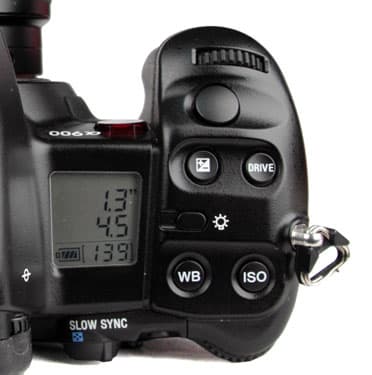
The mono LCD display is small and disappointing.
Connectivity
{{section_header}}{{section.name}}{{/section_header}}
the Canon 1D X offers a ton of connectivity options for the working professional photographer. As is standard, there is a mini USB 2.0 port on the left side of the camera, hidden behind a port along with an HDMI output. There's also an Ethernet jack on the left side of the camera, which is very useful for connecting the camera to the wider world (or just transferring files off). The wired LAN port has its own 115-page instruction manual, though, so get ready to spend some time configuring it if you're not up to speed on network protocols and troubleshooting.
The wired LAN allows more flexibility than you'll get with most cameras, is a fully compatible Gigabit Ethernet port, and has three major functions. The first is the camera's ability to transfer images to an FTP server automatically as they are being shot. The camera can also function remotely from a computer using the EOS Utility software that comes with the camera. Most interestingly, the camera can function also as a server, with remote shooting functions available for up to three different users at a time, accessible through any home web browser. Both forms of wired shooting also let you view the images on the memory card, and there's also DLNA functionality when connecting the camera directly to a DLNA-compatible device, such as a television.
The camera can also use Canon's wireless transfer device, the WFT-E6 Wi-Fi unit. With this, all of the same wired LAN functions are available wirelessly. Users can also easily use this (or the wired LAN port, in a more complicated setup) to sync time codes across multiple 1D X cameras. This will allow you to easily record video or take sequences of shots that are synchronized with several cameras for later use.
Battery
{{section_header}}{{section.name}}{{/section_header}}
As on most pro-style bodies, the battery on the Canon 1D X integrates right into the outer shell of the body, sliding into the portrait grip. The Canon uses the LP-E4 battery pack, as well as the newer LP-E4N. Either battery can be used with the body, and the camera comes with an LP-E4N as well as the appropriate charger. The 1D X's spec sheet on Canon's website did not list an updated CIPA rating, but we found we were able to capture several thousand shots on a single charge, as well as a few dozen short video clips, before needing a charge.
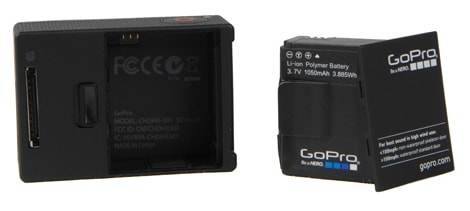
Memory
{{section_header}}{{section.name}}{{/section_header}}
The Canon 1D X sticks with the dual Compact Flash card slots for the new body, with the ports placed in the usual position within the standard landscape grip. The dial to release the memory card port has been moved down slightly from its position on the 1D Mark IV, but it's otherwise the same action to unlock. It's a more complicated motion than the simple lever that is on most bodies, securely keeping the CF cards in place when you want them to, as it's almost impossible to accidentally open the card door.
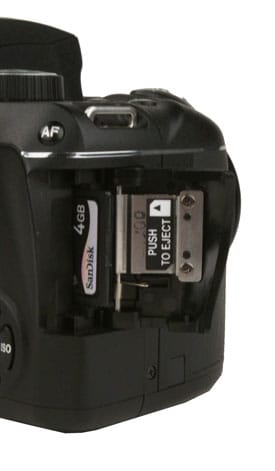
The K2000 accepts inexpensive, easy to find SD cards.
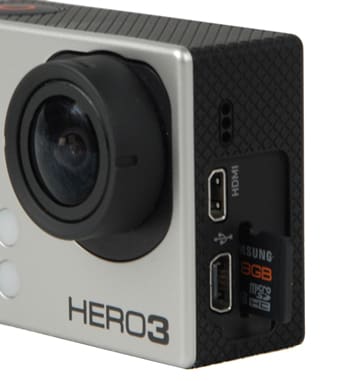
Durability
{{section_header}}{{section.name}}{{/section_header}}
The Canon 1D X, like most professional cameras, is built to the highest grade available on the market. The 1D X is made of a magnesium alloy shell, designed to withstand the abuse put on a camera that is used heavily each day. The camera is fully weather-sealed against dust and moisture, especially when paired with an appropriate high-quality lens.
The 1D X's shutter system is designed to withstand as many as 400,000 shutter cycles, making it one of the longest-lasting pro cameras we've seen yet. Canon also redesigned the autofocus system, stating that it is now rated to withstand more extreme high and low temperatures and high humidity than previously. Canon's marketing of the camera specifically calls out the AF system's sub-mirror, which has been redesigned to be more of a flat surface than an elliptical shape, aiding accuracy and durability.
Photo Gallery
{{photo_gallery "Front Photo", "Back Photo", "Sides Photo", "Top Photo", "Bottom Photo", "Viewfinder Photo 1", "Viewfinder Photo 2", "Display Photo 1", "Display Photo 2", "Secondary Display Photo", "Flash Photo", "Lens Mount Photo", "Lens Photo 1", "Lens Photo 2", "Battery Photo", "Memory Photo", "Ports Photo 1", "Ports Photo 2", "Ports Photo 3", "Ports Photo 4", "Ports Photo 5", "Ports Photo 6", "Modes Photo", "Handling Photo 1", "Handling Photo 2", "Handling Photo 3", "Buttons Photo 1", "Buttons Photo 2", "Mic Photo", "Box Photo"}}
Image Quality
The Canon 1D X is a camera designed for multimedia professionals, combining the speed of the 1D Mark IV and the full-frame image quality and control of the 1Ds series. The 1D X performed as well as any camera in our image quality tests, combining superb color accuracy, very solid dynamic range, and high ISO performance that allows users to comfortably shoot as high as ISO 12800 in most settings. The 1D X performed superbly in practically every test, putting it up in the upper echelon of cameras on the market today. The one issue that crept up was the soft images we got out of the camera from the 24-70mm f/2.8L lens, but shots from the 24mm f/2.8 prime were much better. Still, the only competition among cameras we've tested currently is the Nikon D4.
Sharpness
{{section_header}}{{section.name}}{{/section_header}}
The one area where the Canon 1D X didn't excel relative to the field in our image tests was in resolution. While the 24-70mm f/2.8L lens does quite well in terms of distortion and chromatic aberration, it struggles in edge-to-edge sharpness. Part of this is due to the lack of enhancement being done to the images—the images are practically untouched out of the camera, and benefit greatly from some post sharpening—but the lens itself also has some issues.
For our testing we shot our images at the highest possible quality setting JPEG (with RAW backups to check for processing issues) in the faithful picture setting. This produced images that had a sharpness of roughly 1500 lw/ph in the center of the image, but fell off quite sharply when the lens was wide open at f/2.8 or closed down to f/22. Edge sharpness improved dramatically when the lens was stopped down to f/8, however.
Either way, these results are quite soft, though it's a known issue with this particular lens. Luckily, Canon has, ahem, resolved this issue by releasing the new version of the 24-70mm f/2.8L lens. The new lens is a slightly different barrel design, with a supposedly improved AF system and better resolving power. As this lens wasn't quite available as of press time, we had to stick with the original version. It's worth noting that the new version is more expensive, but it would improve on these results quite a bit. More on how we test sharpness.
Color
{{section_header}}{{section.name}}{{/section_header}}
Color accuracy isn't the be-all, end-all of camera performance scores, but for many photographers it's a crucial part of the process. For working professionals in the field, especially, RAW processing in post is sometimes simply not an option. While most photos can do with a bit of extra sharpening and a change of saturation, the ability to begin with an accurate image out of the camera is a huge benefit.
The Canon 1D X offers this, with an average delta-C color error (taken comparing out-of-camera JPEGs against the known color values of an X-Rite ColorChecker) of just 1.72. Typically we expect high-end professional bodies to produce errors of 2.5 or less, with anything under 2 considered to be stellar. The Canon 1D X is most accurate in its "faithful" color mode, with a saturation level of 100.9%, also among the most accurate we have ever seen. More on how we test color.
For those looking for a slightly different spin, the Canon 1D X's other color modes also produce some very accurate results. The camera's "auto," "standard," and "neutral" modes all kept color error under 2.2, with "portrait" mode coming in at around 2.9 as it pushes some warmer tones for a more pleasing final image.
NOTE: Because of the way computer monitors reproduce colors, the images above do not exactly match the originals found on the chart or in the captured images. The chart should be used to judge the relative color shift, not the absolute captured colors.
{{comparison_bars title="Color Score Comparison", attribute="Color Score", xLabel="Color Score"}}
Color Modes
{{section_header}}{{section.name}}{{/section_header}}
The Canon's color modes can be easily accessed through the camera's main menu system, as well as through the "Q" quick menu in either standard or live view shooting. The color modes carry over through to video shooting as well, and offer several presets as well as three user-savable modes.
All the color modes allow you to adjust sharpness, contrast, saturation, and color tone on a +/- step scale. The user-savable custom color modes require that you pick a base color preset to work off of. If you're looking for a more extreme way to adjust color, you can utilize the white balance adjustment or bracketing to throw some wilder color casts into the mix.
White Balance
{{section_header}}{{section.name}}{{/section_header}}
We found the white balance to be quite accurate on the Canon 1D X, right on par with what we saw out of the Nikon D4, though with a perhaps simpler white balance acquisition. The automatic white balance wasn't as good as on the D4, but the custom white balance was much better, with generally fewer issues both in the field and in a studio setting.
Automatic White Balance ({{product.raw_scores['Auto White Balance Score']}})
When using automatic white balance, the Canon 1D X handled things as well as you'd expect from a pro camera. It wasn't quite as accurate as the Nikon D4, but it was generally very good. We found the camera produced a color temperature error of just 105 kelvin in daylight conditions and 195 kelvin under compact white fluorescent. Under tungsten lighting the automatic white balance predictably struggled (as it does for almost all cameras), as the auto white balance range usually doesn't extend to the 2800 kelvin temperature of incandescent bulbs. The Canon 1D X actually came relatively close, though, with an error of just under 2000 kelvin. That's not great by any means, but it's about 1000 kelvin better than most cameras do.
Custom White Balance ({{product.raw_scores['Custom White Balance Score']}})
The custom white balance results were typically quite good. The camera did very well in the midtones and shadows, but it struggled with assigning fully saturated white (though the opposite was true under tungsten lighting). Our testing found that under daylight and compact white fluorescent conditions the custom white balance was able to get color temperature to within 100 kelvin, which is nearly perfect. Under tungsten lighting the white balance was off by just 150 kelvin, though darker colors produced more of a challenge.
In general we expect DSLRs to excel at this test and the Canon 1D X is no exception. Its ability to diagnose white was very good, even if it lagged slightly behind its main competition, the Nikon D4. There were no real areas where either camera struggled, though as always we recommend avoiding auto white balance in tungsten lighting unless you want a very warm final image or are shooting RAW.
{{comparison_bars title="White Balance Score Comparison", attribute="White Balance Score", xLabel="White Balance Score"}}
White Balance Options
{{section_header}}{{section.name}}{{/section_header}}
The Canon 1D X has all the white balance options you could ask for, with dedicated manual WB control accessing built-in WB presets, multiple custom white balances, custom kelvin color temperature assignment, auto white balance, and white balance bracketing. The Canon method of capturing a custom white balance isn't our favorite (you have to take an image, go into the menu, and then assign that image to one of several custom white balance settings). You can do it directly with a sequence of button presses, but we found it was just as time consuming. With live view at the camera's disposal, there's little reason to not use the rear LCD to capture white balance as it's done on most lesser cameras to the same effect.
Noise Reduction
{{section_header}}{{section.name}}{{/section_header}}
The Canon 1D X offers an ISO range that extends from 100-51200 natively, but can be expanded to 50-204800 if the user needs. In order to keep noise down at those higher ISOs, shooters can use the camera's built-in high ISO noise reduction, which is available at the low, standard, or high settings. More on how we test noise.
Detail Loss
{{section_header}}{{section.name}}{{/section_header}}
While the noise reduction is certainly effective at opening up some of the higher ISO speeds for JPEG shooters, it's not overly aggressive for most of the settings or most of the ISO range. We found detail loss was negligible with noise reduction at the low setting, and it barely affected detail at the medium noise reduction setting. The high ISO noise reduction was very aggressive, kicking in right at ISO 100.
ISO Options
{{section_header}}{{section.name}}{{/section_header}}
The Canon 1D X offers immediate ISO control via the top plate of the camera, letting users set ISO anywhere from 50-204800. The standard range is just 100-51200, but that can be expanded in the menu to the full range. The low ISO of 50 doesn't effect exposure settings, but it does preserve highlight detail better than ISO 100 in very bright situations where parts of the scene would otherwise become saturated and blown out.
Dynamic Range
{{section_header}}{{section.name}}{{/section_header}}
Our dynamic range results showed the Canon 1D X topping out at an impressive 8.43 stops of range with a signal to noise ratio cutoff point of 10:1. It fell off from there, predictably, but noise didn't really begin to drag down dynamic range until ISO 6400 and above. The superior performance at ISO 100 puts it above the Nikon D4, though it falls into line with the D4 through most of the rest of the ISO range. The two camera are otherwise practically neck and neck, though, as both cameras employ their full-frame sensors to get great results even at high ISO speeds. More on how we test dynamic range.
{{comparison_bars title="Dynamic Range Score Comparison", attribute="Dynamic Range Score", xLabel="Dynamic Range Score"}}
Low Light Performance
{{section_header}}{{section.name}}{{/section_header}}
The Canon 1D X offers a lot of advantages to shooters who want to take the camera into a low light environment. The camera's high ISO performance is an obvious advantage in this regard, as it keeps noise to a minimum even over very long exposures. In general, though, if you're comparing the 1D X to the Nikon D4, low light performance is going to be the Nikon's territory. The performance metrics (high ISO noise as well as focus sensitivity) are largely a draw, but the ergonomics of the D4 make it better for one reason: backlit button labels.
While both cameras can light up their secondary LCDs when necessary so you can see what your shooting settings are, the D4 makes adjusting those settings much easier. It's a small thing, but when both cameras perform so well in a low light environment, it's the little details that a professional is going to be frustrated by.
Noise Reduction
{{section_header}}{{section.name}}{{/section_header}}
The Canon 1D X offers an ISO range that extends from 100-51200 natively, but can be expanded to 50-204800 if the user needs. In order to keep noise down at those higher ISOs, shooters can use the camera's built-in high ISO noise reduction, which is available at the low, standard, or high settings. More on how we test noise.
ISO Options
{{section_header}}{{section.name}}{{/section_header}}
The Canon 1D X offers immediate ISO control via the top plate of the camera, letting users set ISO anywhere from 50-204800. The standard range is just 100-51200, but that can be expanded in the menu to the full range. The low ISO of 50 doesn't effect exposure settings, but it does preserve highlight detail better than ISO 100 in very bright situations where parts of the scene would otherwise become saturated and blown out.
Focus Performance
{{section_header}}{{section.name}}{{/section_header}}
We found the Canon 1D X's 61-point AF system to be quite sensitive, even in low light. We test focus at two light levels—40 lux and 10 lux—and found the camera was able to easily lock onto the high contrast subject with great accuracy and generally quickly. When using the rear LCD to focus with contrast detection autofocus the system was much slower, but that was also true in bright light as well. We also found the contrast detection autofocus had trouble locking in at the 10 lux level, as a few times it would get close, but give a red box indicating focus wasn't achieved.
Video: Low Light Sensitivity
{{section_header}}{{section.name}}{{/section_header}}
As we saw with the Nikon D4, the Canon 1D X can practically see in the dark. We found that with auto ISO set (max of ISO 25600) the camera produced a 50 IRE image at a light level of just 6 lux. When you allow the camera to use its maximum video ISO of 204800, you get a much noisier image, but sensitivity improves dramatically. Our luxometers don't differentiate light levels between 0 and 1 lux, but both the Nikon D4 and the 1D X produced a 50 IRE image easily after the luxometer stopped registering even a single lux. Since we don't have the ability to differentiate between the two, we gave the 1D X and the D4 the same maximum score, as both were capable of easily capturing video in light conditions where our eyes could barely see.
Chromatic Aberration
{{section_header}}{{section.name}}{{/section_header}}
The Canon 24-70mm f/2.8L that we used for testing the 1D X keeps chromatic aberration down very well, though there was still some present in the JPEG images the camera took. When shooting RAW, this aberration is very minor and easily corrected in software. In general the major areas of concern we saw were with the aperture wide open at the extreme ends of the focal range. Even then lateral chromatic aberration was minor, and didn't effect image quality all that much.
Distortion
{{section_header}}{{section.name}}{{/section_header}}
Distortion was pretty minimal with the 1D X and the (original) 24-70mm lens, with just 1.13% barrel distortion visible at the wide end of 24mm. That almost immediately went away through the focal range though, turning into a 0.41% pincushion distortion at the middle focal length of 45mm. That pincushion distortion gets slightly worse, increasing to 1.66% at the telephoto end of 70mm. Ultimately these are acceptable results, and won't detract from most photography all that much.
Motion
{{section_header}}{{section.name}}{{/section_header}}
Motion looked great with the Canon 1D X, as our motion test showed very little signs of signal interference or distortion due to subject movement. There were hints of moire through the image, however, and some trailing with the RGB and monochrome pinwheels in our motion rig. More on how CamcorderInfo tests motion.
The Canon 1D X's video has a subjective quality that just looks better than the Nikon D4 when capturing motion. The Nikon D4 perhaps had a little sharper video, but moire is a concern with both cameras. It's not as bad as it once was (such as with the 5D Mark II), but it's still a concern if your aim is to use the camera for high-end video production.
Video Sharpness
{{section_header}}{{section.name}}{{/section_header}}
We found the Canon 1D X was able to produce sharpness results of approximately 700 lw/ph vertical sharpness (around 600 lw/ph horizontal) with the 24-70mm f/2.8L series lens stopped down to f/9. We found the sharpness was much worse with the lens wide open, but there is still relatively narrow depth of field with the f/9, so the image still has that "full-frame aesthetic" that so many videographers love. More on how CamcorderInfo tests video sharpness.
{{comparison_bars title="Video Sharpness Score Comparison", attribute="Video Sharpness Score", comps="video", xLabel="Video Sharpness Score"}}
Low Light Sensitivity
{{section_header}}{{section.name}}{{/section_header}}
As we saw with the Nikon D4, the Canon 1D X can practically see in the dark. We found that with auto ISO set (max of ISO 25600) the camera produced a 50 IRE image at a light level of just 6 lux. When you allow the camera to use its maximum video ISO of 204800, you get a much noisier image, but sensitivity improves dramatically. Our luxometers don't differentiate light levels between 0 and 1 lux, but both the Nikon D4 and the 1D X produced a 50 IRE image easily after the luxometer stopped registering even a single lux. Since we don't have the ability to differentiate between the two, we gave the 1D X and the D4 the same maximum score, as both were capable of easily capturing video in light conditions where our eyes could barely see.
Usability
Whether you're new to the Canon line or upgrading from the Canon 1Ds/1D Mark IV, the Canon 1D X represents a total level of control to rival any other camera on the market. With 11 controls that can be set up almost any way you like, there are options for tuning the camera to an incredible degree. For our money, though, the improvement in connectivity makes the 1D X a much more useful tool. While the built-in wired LAN isn't going to do much for wildlife photographers, the connectivity and remote shooting controls are going to be a real boon for studio, sports, and news shooters. In the end the 1D X does the very complicated things easily, and the simple everyday things in a no-nonsense manner that is rivaled only by the Nikon D4.
Automatic Features
{{section_header}}{{section.name}}{{/section_header}}
The Canon 1D X's metering system does a great job of analyzing scenes and producing vivid images that are well-exposed. When shooting in modes that utilize it, the 252-zone, 100k-pixel RGB metering sensor does well. We found it rarely produced scenes that were too dark or too light, maintaining more highlight headroom than we usually needed. It's not the kind of camera you're going to give to a beginner or novice, but if you know what you're doing, the 1D X can take care of plenty of basics quickly and easily.
Buttons & Dials
{{section_header}}{{section.name}}{{/section_header}}
It seems both Canon and Nikon came to the same conclusion when redesigning their respective flagship DSLRs this time around: more is better. While the D4 doesn't quite go to the same degree as the 1D X, there are many of the same touches. The 1D X now integrates a second joystick onto the back panel for portrait grip shooters, just as the D4 did. Both cameras also grabbed some popular control features from their prosumer models, integrating them into the professional bodies.
Menu
{{section_header}}{{section.name}}{{/section_header}}
The menu in the Canon 1D X is the same as we've seen on previous Canon models: a series of tabs aligned horizontally along the top edge of the screen. The tabs are each color-coded and most have multiple pages within them. Canon uses red for the shooting and video option tabs, purple for autofocus, blue for playback, yellow for system settings, orange for custom options, and green for the customizable "my menu."
It's an intelligent menu that's easy to navigate, and the multi-controller joysticks make navigating the menu and various options a breeze. You can also use the control dials on the camera to quickly sweep through on-page lists or move between entire tabs, letting you quickly slide around the menu quickly and easily. An important addition is the autofocus menu, which lets users take much more sophisticated control over the camera's autofocus performance.
Instruction Manual
{{section_header}}{{section.name}}{{/section_header}}
The instruction manual for the 1D X is massive, as you'd expect. The camera comes with a basic manual that stretches to 419 pages, if you include the index, various legal junk, and wasted pages. That doesn't include the supplemental manual for the wired LAN, which is a good thing to keep in your bag, as it includes some basic setup and troubleshooting tips that may come in handy. Overall we found the manual to be very good at explaining the basics, and the index was (usually) outlined intelligently. For example, where one entry was referenced on multiple pages, the manual sometimes outlined what each page pertained to, sometimes not. (i.e. "Movie" has 29 references in the manual, and each reference is called out beside corresponding page numbers; the "Q" menu has four references, and the manual just lists the pages and expects you to go hunt for what you need)
Handling
{{section_header}}{{section.name}}{{/section_header}}
The Canon 1D X handles as well as you'd expect a top of the line professional camera body to handle. It's not plush, it doesn't have removable grips or a cute leather case. It's a workhorse. The grip is sturdy, the body is well-balanced, and the controls are placed where they can be accessed quickly and easily. That said, the camera is a joy to shoot with once you get adjusted to the control placement. If you have medium to large hands, the button placement is nearly perfect. This is obviously subjective, but most of the people on our staff who handled the camera felt it was carefully designed to accommodate a wide range of hands. It's usable by those with small hands, of course, but reaching some controls may require an extra hand for balance.
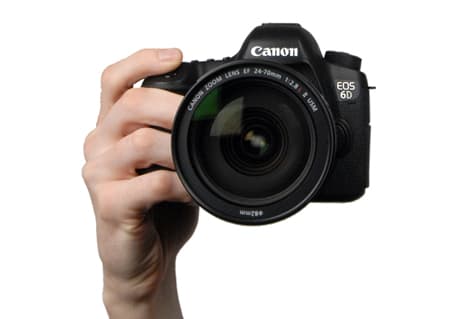
The Canon 1D X combines video and still photography controls very well, as most of the buttons and dials either work double duty or are out of the way so as to not be a bother. This is important, as the 1D X will have to live dual lives as a still and video camera in many professional organizations. It's clear that the main priority in the camera's design is still photography, but the video controls are good enough that most videographers will be satisfied.
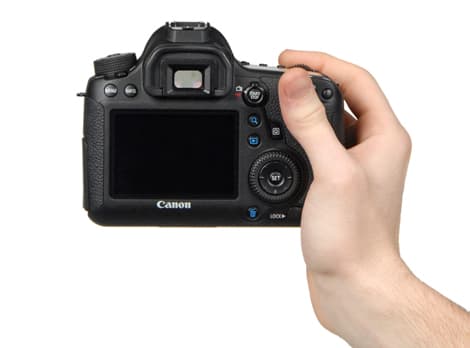
The biggest improvement to handling with the 1D X is certainly to the layout and design of the camera when shooting using the portrait grip. While it seemed like more of an afterthought on some previous 1D-series cameras, the portrait grip now feels almost as comfortable as the landscape grip. It now has its own multi-controller joystick for navigating the menu, AF-on, AE-lock, AF point select, and customizable multi-function button. The portrait grip feels just slightly more comfortable to use than it does on the D4, despite the similar design.
The one thing we still can't figure out is why cameras don't organize the menu so that it's usable when holding it via the portrait grip. Even though the camera can tell when it's oriented on its side, the menu displays as though you were holding the camera normally. The vertical grip also lacks an exposure compensation button, and neither the depth of field button nor the multi-function button on that side offer it as an option.
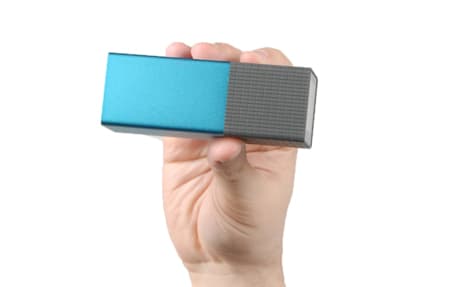
Buttons & Dials
{{section_header}}{{section.name}}{{/section_header}}
It seems both Canon and Nikon came to the same conclusion when redesigning their respective flagship DSLRs this time around: more is better. While the D4 doesn't quite go to the same degree as the 1D X, there are many of the same touches. The 1D X now integrates a second joystick onto the back panel for portrait grip shooters, just as the D4 did. Both cameras also grabbed some popular control features from their prosumer models, integrating them into the professional bodies.
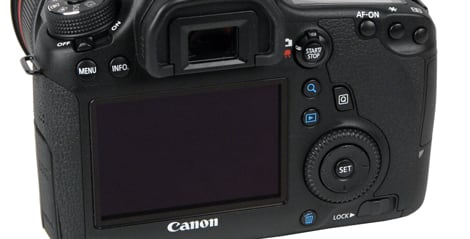
For the 1D X, our favorite addition is the camera's "Q" quick control menu. The same menu that's available on cameras like the Canon Rebel T3i is on the 1D X, offering quick and easy access to some basic control features. It's best used when shooting in live view or videos, but it does have its place for still shooters as well looking for quick access to things like color modes.
In general, however, most of our staff felt the 1D X handled extraordinarily well. The buttons and dials are all placed in appropriate places, the index finger falls naturally on the shutter releases, and the controls you'd need to reach with a single hand are within reach. There's some misses—our staff member with the smallest hands struggled to reach a few of the buttons on the camera—but for the most part the 1D X puts more control at your fingertips than previous 1D-series models, whether you're shooting stills or video.
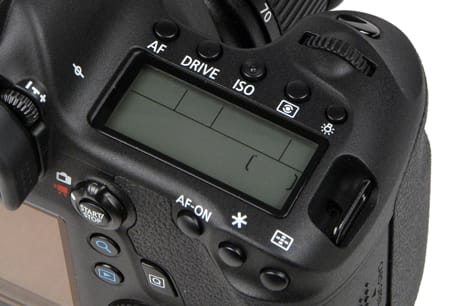
Display(s)
{{section_header}}{{section.name}}{{/section_header}}
The rear LCD has a resolution of 1.04 million dots (sub-pixels), and a diagonal measurement of 3.2 inches. That puts it among the top of the class for a standard DSLR. The monitor is fixed into the camera, so for videography you'll have to use an external monitor or deal with having to look silly to get certain shots.
Secondary Display
The secondary displays on the Canon 1D X show a bevy of useful information. Most of your shooting information—exposure values, compensation, autofocus modes, ISO speed—are contained to the top plate LCD, while the rear LCD displays information on files, image size and quality, and card information. The displays are useful for separating out information without things getting too cluttered, and both secondary displays can be lit up with a button press, though the buttons lack the backlit labels that the D4 has.

The mono LCD display is small and disappointing.
Viewfinder
{{section_header}}{{section.name}}{{/section_header}}
The viewfinder on the 1D X is large and bright, with 100% coverage of the frame. It has a magnification of approximately 0.76x, with a 20mm eyepoint. The viewfinder is adjustable, with a removable eyecup that comes with the camera. The finder makes acquiring and confirming focus very easy, with plenty of information presented around the frame. If you're doing long exposures with the camera, there's also a lever to cover the viewfinder so that there's no extra light leaking onto the sensor.
Shooting Modes
{{section_header}}{{section.name}}{{/section_header}}
The Canon 1D X offers just the basic PASM shooting modes, with options for bulb and custom shooting modes as well. The modes are visible on the top plate's LCD, as there's no physical mode dial on the camera.
Manual Controls
{{section_header}}{{section.name}}{{/section_header}}
Most of the main shooting functions you might require are available on the body of the 1D X, preventing the need for most trips to the menu. The camera has dual control dials, including the rear dial as well as the one on the top plate near the index finger. You can also easily adjust ISO by holding down the ISO key (closest to your hand near the top plate's LCD) and adjusting the rear dial.
The front of the 1D X features a set of buttons, one for depth of field preview and a second customizable button, for both landscape and portrait grips. This makes it easy to transition between both grips quickly, without any real loss of control. The buttons can't assume every function under the sun, but they can be used for some pretty useful tricks, such as switching to specific autofocus functions.
Focus
{{section_header}}{{section.name}}{{/section_header}}
We found the Canon 1D X's 61-point AF system to be quite sensitive, even in low light. We test focus at two light levels—40 lux and 10 lux—and found the camera was able to easily lock onto the high contrast subject with great accuracy and generally quickly. When using the rear LCD to focus with contrast detection autofocus the system was much slower, but that was also true in bright light as well. We also found the contrast detection autofocus had trouble locking in at the 10 lux level, as a few times it would get close, but give a red box indicating focus wasn't achieved.
The Canon 1D X offers an incredible amount of focus options for sports and news photographers. The camera puts its 61-point AF to great use, with a veritable ton of options for achieving focus. One of the big areas of improvement is the ability to fine-tune focus tracking. The 1D X offers six built-in "cases" that offer adjustable settings for tracking sensitivity, accelleration/deceleration, and autofocus point auto-switching. You can adjust all these presets to you liking, letting you fine tune performance to whatever event or sport you're photographing.
Canon also has claimed that the system intelligently figures out focus distance across the frame to better track subjects. It does this by calculating subject distance at a variety of points, so that if you're tracking a subject and the AF point you're using moves onto an obstacle in the foreground (or off the subject and onto the background), the camera will ignore the change if the focus distance change is dramatic. Similarly, the camera can also detect panning using a built-in gyroscope, letting it better follow a moving subject as you pan the camera to follow it.
Recording Options
{{section_header}}{{section.name}}{{/section_header}}
The Canon 1D X lets you adjust image size and quality in more ways than just about any other camera. The camera has a maximum resolution of 18.1 megapixels, with options to shoot in RAW, JPEG, and RAW+JPEG. The camera lets you shoot in a reduced resolution (for both RAW and JPEG) if you want to keep file sizes down or don't need an image for more than web resolution. The Canon 1D X also lets you set compression quality for each of the four JPEG sizes, adjusting them on a 10-stop scale.
Speed and Timing
{{section_header}}{{section.name}}{{/section_header}}
The Canon 1D X is obviously a camera that is geared to appeal to a wide variety of professional photographers. With features to benefit studio, wildlife, and news photographers, the 1D X is going to get a lot of love. Still, the camera's main base is still likely to be studio and event photographers, for which speed of capture is absolutely essential. The Canon 1D X features speed that is rivaled only by the Nikon D4, as both cameras capture upwards of 12 frames per second.
The Canon 1D X offers two continuous shooting settings—low and high—which can be adjusted from 1-12 frames per second. The camera also allows for capture of JPEG images at a listed rate of 14 frames per second, though you have to set it at that speed manually.
For our timing test, we capture a burst of shots and then figure out a frames per second rating using a five-shot average. In a five-shot burst, we found the Canon 1D X exceeded its listed FPS rate for both RAW and JPEG shooting. The RAW shooting speed came in as fast as 13.3 FPS over any five-shot burst, while the "14FPS" JPEG mode actually rang in at a max of around 15 frames per second.
These numbers put the 1D X just a hair ahead of the Nikon D4, which came in at just over 12 FPS for both RAW and JPEG. It should also be noted that if you bump the ISO up, shooting rate will begin to decline, capping at 10 FPS.
The 1D X offers just two self-timer settings, 10 seconds and 2 seconds. This doesn't give you a ton of options, and it's an area where the Nikon's customizable timer really comes in handy. The Canon also lacks any sort of built-in interval/timelapse shooting, which has become quite popular.
Focus Speed
{{section_header}}{{section.name}}{{/section_header}}
We found the Canon 1D X's 61-point AF system to be quite sensitive, even in low light. We test focus at two light levels—40 lux and 10 lux—and found the camera was able to easily lock onto the high contrast subject with great accuracy and generally quickly. When using the rear LCD to focus with contrast detection autofocus the system was much slower, but that was also true in bright light as well. We also found the contrast detection autofocus had trouble locking in at the 10 lux level, as a few times it would get close, but give a red box indicating focus wasn't achieved.
The Canon 1D X offers an incredible amount of focus options for sports and news photographers. The camera puts its 61-point AF to great use, with a veritable ton of options for achieving focus. One of the big areas of improvement is the ability to fine-tune focus tracking. The 1D X offers six built-in "cases" that offer adjustable settings for tracking sensitivity, accelleration/deceleration, and autofocus point auto-switching. You can adjust all these presets to you liking, letting you fine tune performance to whatever event or sport you're photographing.
Canon also has claimed that the system intelligently figures out focus distance across the frame to better track subjects. It does this by calculating subject distance at a variety of points, so that if you're tracking a subject and the AF point you're using moves onto an obstacle in the foreground (or off the subject and onto the background), the camera will ignore the change if the focus distance change is dramatic. Similarly, the camera can also detect panning using a built-in gyroscope, letting it better follow a moving subject as you pan the camera to follow it.
Features
The Canon 1D X is largely a refinement of previous 1D-series Canons, increasing control while improving on the internal hardware. The 1D X does include some extras, though, that are sure to appeal to professionals wanting to speed up their workflow. The camera's video functionality and controls may be chief among these, but the addition of wired LAN for remote control and automatic image transfer also are sure to appeal to many professional photographers.
Recording Options
{{section_header}}{{section.name}}{{/section_header}}
The Canon 1D X offers two forms of compression at the full 1080/30p resolution: ALL-I and IPB. ALL-I compressed each frame individually, which will produce larger files of a higher quality that is easier to edit. IPB compression uses keyframes to compress multiple frames of a video, resulting in smaller files that are harder to trim in post.
The 1D X can record in either of these compression methods for shooting at 1080/30p, 1080/24p, 720/60p, and 720/50p. The camera reverts to just IPB compression when shooting at 480/30p. The camera records video into .MOV files using H.264 compression, with linear PCM audio.
Video Controls
{{section_header}}{{section.name}}{{/section_header}}
When recording video, you are able to make use of any of the camera's main PASM shooting modes. The camera lets you adjust ISO, shutter speed, and aperture while recording, depending on which shooting mode you are engaged in. The 1D X also lets you adjust audio levels on the fly, offering a truly professional level of control relative to most DSLRs.
Auto Controls
If manual control in video isn't your thing, you can simply record using program automatic. This mode will take over the exposure decisions for you, letting you adjust exposure compensation if you wish. You can also make use of the camera's picture control modes (color modes), letting you fine-tune the ultimate image quality that the camera puts out.
Zoom
When shooting video with the 1D X, you can zoom in to check focus, with a magnification of up to 10x. This will let you make slight adjustments when necessary. Unfortunately, this zoom goes away when you begin recording video, so you're unable to confirm that focus has been kept, and there's no "crop zoom" available for capturing video.
Focus
Continuous focus was quite good in live view and when shooting video with the 1D X. It doesn't have the smooth gradual focus shift that we like to see on camcorders, but it's quick and effective in establishing focus. You're still going to need to focus manually if you want to pull focus between two points, however. There's no focus peaking feature on the 1D X, but the camera does have the 10x digital zoom that you can use to check focus prior to pressing record.
Exposure Controls
Nearly the entire exposure range is available to users when shooting video with the 1D X. As you'd expect, shutter speed can only be set to speeds faster than the current frame rate you're shooting in (so 1/30th of a second and faster for 1080/30p). The full aperture range is available for adjustment both before and during recording. If you're planning on capturing low light video you'll be happy to know that the full ISO range is available for video recording, all the way up to 204800. It's certainly grainy video plague with banding, but the ability is there if you need it.
Audio Features
{{section_header}}{{section.name}}{{/section_header}}
The Canon 1D X includes a standard 3.5mm microphone jack on the camera. This lets you capture high-quality audio, even though it lacks the 5D Mark III's headphone jack for monitoring it. You can let the camera automatically determine audio levels when recording or set audio level caps manually. If audio is set to manual control you will see the audio levels displayed on the rear LCD, with control available even while recording.
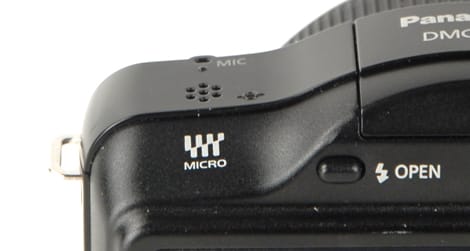
In the Box
{{section_header}}{{section.name}}{{/section_header}}

In the box with the Canon 1D X you can expect to find the following accessories:
EOS-1D X Digital SLR Body
• eyecup Eg (not shown)
• battery pack LP-E4N
• battery charger LC-E4N
• wide neck strap L7
• cable protector
• stereo AV cable AVC-DC400ST
• USB interface cable IFC-200U
• EOS digital solution Disc
• software instruction manual
Conclusion
When we first saw the Canon 1D X way back in the fall of 2011, it became immediately clear that Canon was looking to produce a camera that would be right at home in the bags of world-class photographers and videographers alike.
Even amongst pure still photographers, the Canon 1D X's dove-tailing of the sports-centric 1D Mark IV and the studio-centric 1Ds Mark III lines seemed to be an ambitious move designed to capture the majority of the pro market with a single professional body. After seeing the test results and shooting with the Canon 1D X for an extended period of time, we have to say that Canon has largely succeeded in that mission.
The Canon 1D X combines the speed and autofocus improvements of the Mark IV with the full-frame image quality of the 1Ds series. Throw in a big helping of professional video features that match Canon's own 5D Mark III, a new 61-point autofocus system, and improved connectivity features like wired LAN support and you have a flagship camera that can appeal to almost the entire professional imaging community.
In truth, this camera is built more for speed than for comfort, inheriting more 1D Mark IV than 1Ds. While it does have a full-frame sensor—a feature that has become increasingly common throughout the market in 2012—this camera shoots as fast as any DSLR on the market. The 1D X captured RAW files at 13.3 frames per second (15fps for JPEG) in our tests, edging out even the mighty Nikon D4.
On top of that, the 61-point autofocus system is once again top-of-the-class. The woes of the 1D Mark III are well and truly behind Canon, thanks to an autofocus system that is as customizable as it is accurate. With six different adjustable "case" settings, the autofocus can be tuned to adjust to multiple scenarios, no matter what kind of subject you're shooting.
For news, sports, and wildlife photographers needing the highest-quality images captured with speed and accuracy, the 1D X should become the go-to body for everyone not already shooting with a Nikon D4. For studio shooters looking for full-frame resolution, the choice isn't as clear, but the Canon 1D X's extreme color accuracy, expansive dynamic range, and suite of tethered controls should make it a popular choice.
For video, we found the 1D X produced video sharper than the 5D Mark III, though the Mark III is likely the better option for professional shoots. The 1D X has basically every feature that Mark III does, but it's more expensive, less portable, and lacks the Mark III's headphone jack.
Still, it's clear that Canon has succeeded in creating a jack-of-all-trades professional DSLR. The integration of greater control across the entire body is certainly welcome, with nearly all the additions succeeding in making the camera easier to operate. Whether you shoot stills or video, studio models or wildlife, the Canon 1D X has features to make your job easier—and it produces fantastic images, too. It may have taken 10 months to get the camera to market, but it appears the 1D X was worth the wait.
Meet the tester
TJ is the former Director of Content Development at Reviewed. He is a Massachusetts native and has covered electronics, cameras, TVs, smartphones, parenting, and more for Reviewed. He is from the self-styled "Cranberry Capitol of the World," which is, in fact, a real thing.
Checking our work.
Our team is here to help you buy the best stuff and love what you own. Our writers, editors, and experts obsess over the products we cover to make sure you're confident and satisfied. Have a different opinion about something we recommend? Email us and we'll compare notes.
Shoot us an email


